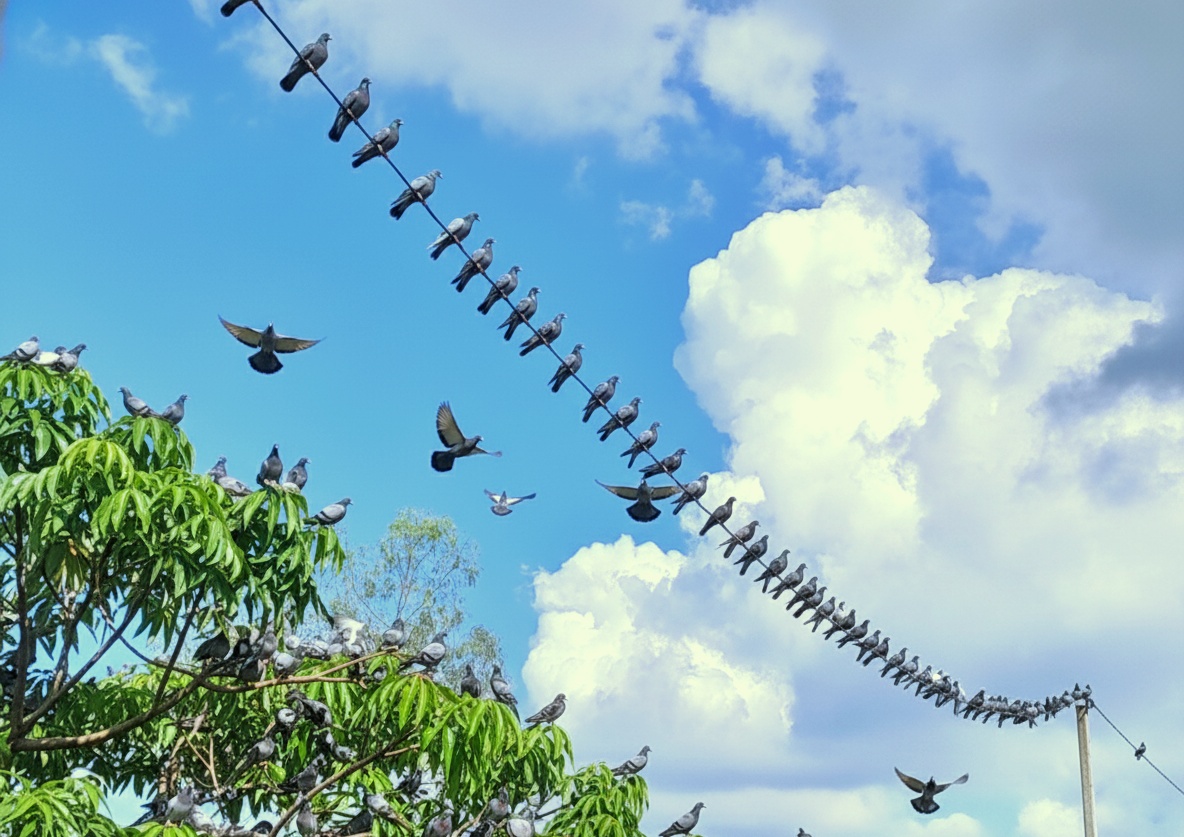News Flash

LALMONIRHAT, Nov 4, 2025 (BSS) - Pigeon rearing, once widespread tradition in northern Bangladesh, is on the verge of extinction as the people are struggling to adjust with modern life style.
The birds, long regarded as symbols of peace, love, and unity, have been integral to local culture for generations, especially in districts like Lalmonirhat. Pigeons were not only kept for leisure and as racing animals but were also a valued source of income and nutrition.
However, due to changing times, space limitations, and a lack of interest from the younger generation is hardly engaged with rearing of pigeon.
Historically, Lalmonirhat was home to a variety of pigeon breeds, including domestic pigeons, silver king, white king, giribaj, racer, fantail, and tipler.
Just a decade ago, it was common to see pigeons perched on rooftops, cooing in every neighborhood, and flying gracefully over fields at dawn and dusk.
These birds were more than just pets—they were part of the community’s daily life, valued both for their companionship and for the protein-rich meat that featured prominently in the local diet.
However, the numbers of pigeons in the area have dwindled in recent years.
Several factors have contributed to this decline, including the rise of modern buildings and structures that have reduced the availability of suitable nesting spaces.
The increasing pace of urban life has also led to a reduced interest in pigeon-keeping, particularly among younger generations.
Furthermore, the spread of viral diseases like avian influenza, environmental pollution, and the challenges posed by climate change have made it more difficult for pigeons to thrive.
According to former chairman of Barabari union, Yasin Ali Molla, the busy, fast-paced nature of modern life has played a significant role in the decline of this tradition.
“Earlier, pigeons could be seen in almost every house. Now, due to the busyness of modern life, space shortages, and a lack of interest from the younger generation, the tradition of keeping pigeons in this region is being lost,” he explained.
Local residents also miss the once-charming sight of pigeons in flight.
Chand Mia of Mahendranagar union reminisced, “Once upon a time, the flight of pigeons in the morning and afternoon was a captivating sight. Now that vitality is no longer visible.”
Alam Hossain, a trader from Khuniagach Union, observed, “Earlier, a lot of pigeons were sold in the market, but now that picture is gone.”
Despite the challenges, there are voices of hope among those who see pigeon rearing as an untapped resource that could once again flourish.
Rafiqul Islam, a trader from Durgapur Union, believes that pigeon farming could be revitalized into a promising industry with the right support.
“With proper training and support, pigeon farming can become a thriving sector again. It costs less, profits are higher, and good income can be earned through the sale of eggs and chicks. It is possible to revive this sector if the government and the livestock department cooperate,” he said.
Dr. Md. Jahangir Alam, District Livestock Officer, echoed this sentiment, acknowledging the decline in interest but emphasizing the potential for revival.
“In the past, many people kept pigeons for both hobby and income, but now this tradition has faded due to the busyness of modern life and a decrease in interest.
However, those who are still keeping pigeons are receiving regular advice, and vaccines are being provided. With everyone's cooperation, we can bring this tradition back again,” he explained.
Dr. Alam also suggested that with the right planning, training, and incentives, pigeon rearing could become a lucrative venture that benefits rural communities. “We are planning to inform the concerned ministries so that assistance can be provided to increase the number of pigeons and ensure their proper care,” he said.
Local experts believe that the revival of pigeon farming could contribute significantly to the rural economy, providing jobs, enhancing food security, and potentially creating new markets for both meat and poultry products.
With the right support from the government and increased awareness among the public, the tradition of pigeon keeping could once again soar to new heights, reintegrating itself into the cultural fabric of Lalmonirhat and beyond.